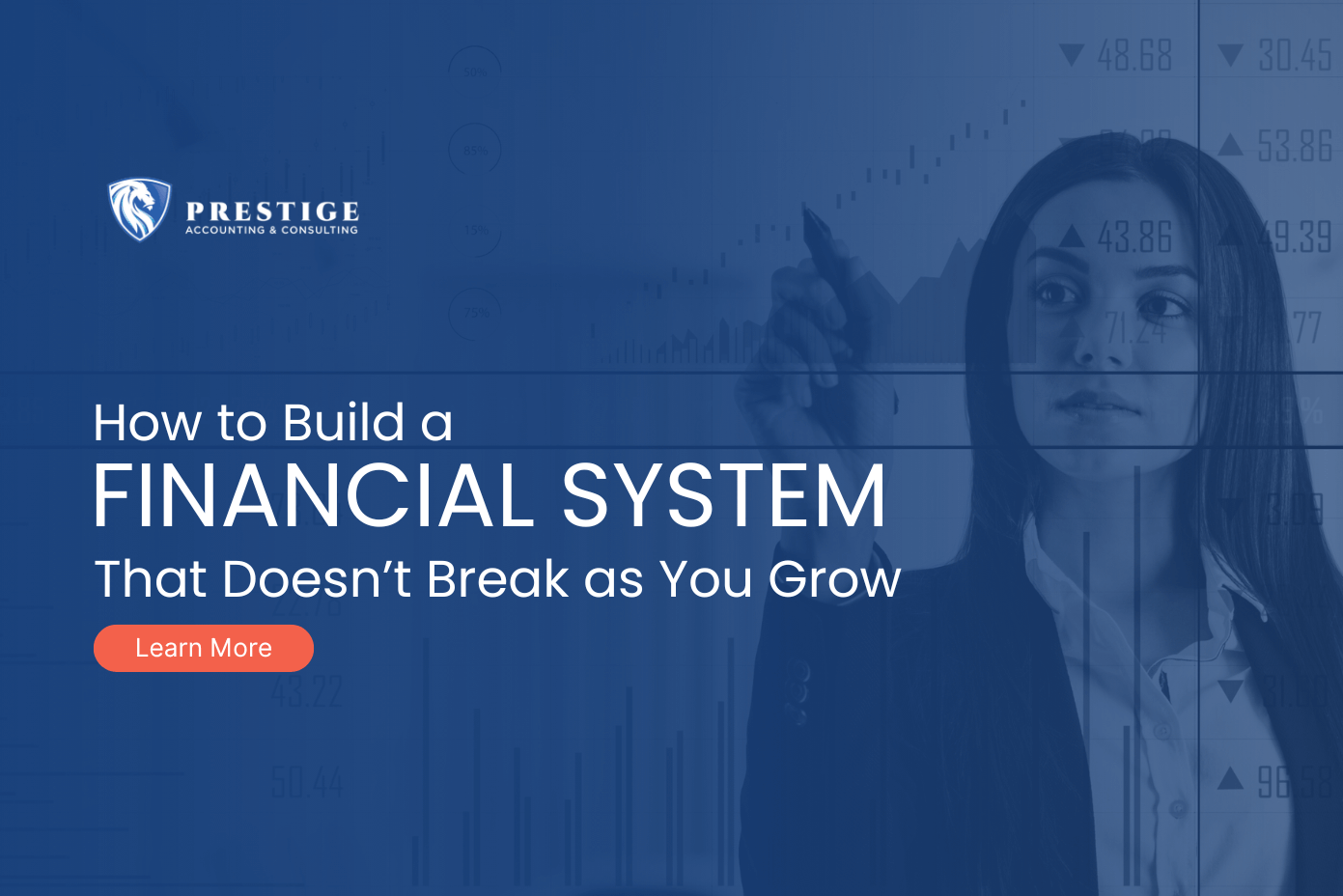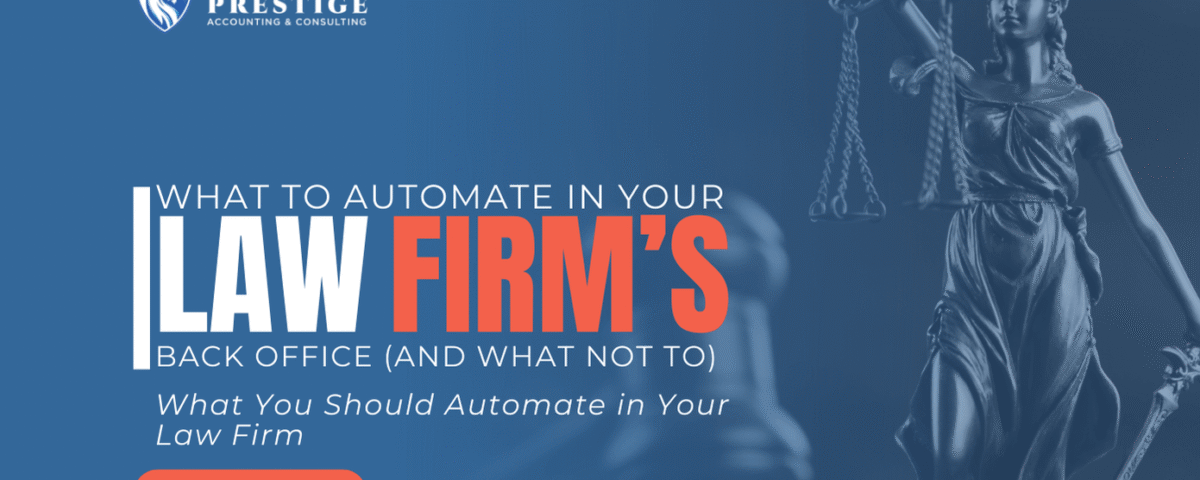
How to Build a Financial System That Doesn’t Break as You Grow
September 2, 2025
Top 5 Accounting Tools We Recommend to Our Legal Clients
September 9, 2025
Categories
What to Automate in Your Law Firm’s Back Office (and What Not To)
When attorneys hear the word “automation,” they often think of bots replacing people or fancy dashboards they’ll never use.
But that’s not the kind of automation law firm owners need.
Real back office automation isn’t about cutting corners or replacing your paralegal with AI—it’s about creating systems that reduce manual error, free up your team’s time, and keep you focused on what drives revenue and results.
The challenge is knowing what to automate—and just as importantly, what not to.
Let’s walk through that.
Why Automate at All?
Your back office runs your business. If tasks like billing, reporting, or document tracking are inconsistent or depend too heavily on memory, the consequences aren’t just inefficiency—they’re compliance risks, client dissatisfaction, and lost revenue.
The purpose of automation is to:
- Standardize processes so nothing falls through the cracks
- Reduce human error, especially in recurring financial tasks
- Increase firm capacity without hiring prematurely
- Protect your time from low-value admin work
- Create a scalable infrastructure that doesn’t rely on your memory or micromanagement
But automation should never replace critical thinking or client interaction.
What You Should Automate in Your Law Firm
Let’s start with the areas where automation almost always makes sense.
1. Billing and Invoicing
Whether flat fee or hourly, your billing process should be systematized and recurring. Automating invoicing ensures:
- Bills go out on time
- Payment links are embedded
- Reminders are scheduled
- Cash flow is predictable
Tools like Clio, LawPay, and QuickBooks Online allow for automated invoice generation, scheduling, and follow-up.
2. Client Intake Workflows
Use intake forms that auto-populate client records, trigger task checklists, and notify your team. With tools like Lawmatics a potential client can:
- Fill out a form on your website
- Automatically receive a welcome email or call scheduler
- Trigger an internal checklist for follow-up and conflict checks
No missed calls. No dropped leads.
3. Trust Account Transfers and Notifications
While you should never fully automate trust withdrawals (ethics rules require judgment), you can automate:
- Alerts when funds are earned and ready to be transferred
- Recurring tasks for reconciliation
- Document generation for client notifications
Automation here ensures compliance and documentation without relying on memory.
4. Report Scheduling and Reminders
Set up automated:
- P&L and cash flow reports emailed to your inbox weekly
- Reconciliation reminders for your bookkeeper
- KPI dashboards refreshed in real time
- Tax payment schedule alerts
This is how you stop saying, “I need to check on that”—and start reviewing things proactively.
What You Shouldn’t Automate (Yet)
Not every task benefits from automation. In fact, automating too soon—or in the wrong places—can break client trust or compromise decision quality.
❌ 1. Client Communication (Entirely)
Auto-responses are great for immediate intake replies or appointment confirmations. But beyond that, they can feel impersonal or robotic.
Example: You shouldn’t automate emails about legal strategy changes, billing disputes, or sensitive updates.
Automate notifications to your team to respond—but let the actual response come from a human.
❌ 2. Complex Legal Decisions
If a task involves judgment, discretion, or legal advice, it should never be fully automated. This includes:
- Determining fee structures
- Accepting or rejecting a client
- Responding to conflict checks
- Making tax decisions without a financial advisor
AI tools can assist, but they are not a replacement for your expertise.
❌ 3. Trust Reconciliations (Fully)
You can automate the reminder and parts of the ledger update—but you must manually:
- Confirm bank balances
- Reconcile client ledgers
- Review compliance exceptions
Trust accounting is one area where automation supports accuracy—but doesn’t replace accountability.
Automation Isn’t a Strategy—It’s a Tool
Before you automate, ask:
- Does this task happen on a recurring basis?
- Are the steps consistent?
- Are errors or delays frequent?
- Does it take time away from higher-value activities?
Automation is most effective when paired with process clarity. If your firm doesn’t have clear workflows, automating chaos just creates faster chaos.
Building a Sustainable Automation Strategy
Here’s the smarter path:
- Audit your current workflows. Where is time wasted? Where do errors happen?
- Prioritize low-risk, high-reward tasks. Think billing, reminders, and internal processes.
- Use tools your team can understand. Fancy doesn’t mean better. Adoption matters more.
- Train your team. Automation only works if everyone knows how to use it—and when not to.
- Monitor and adjust. Automation should improve consistency and free up time. If it doesn’t, reassess.
Let’s Automate What Actually Matters
At Prestige Accounting and Consulting, we help law firm owners build systems that grow with them—without sacrificing compliance or client service.
That means:
- Identifying the back office areas ripe for automation
- Selecting tools that integrate with your practice
- Structuring workflows for billing, trust management, reporting, and more
📅 Book a free consultation and we’ll help you map out what to automate, what to delegate, and what to drop altogether.
Because real growth doesn’t come from doing more. It comes from doing the right things—better.




